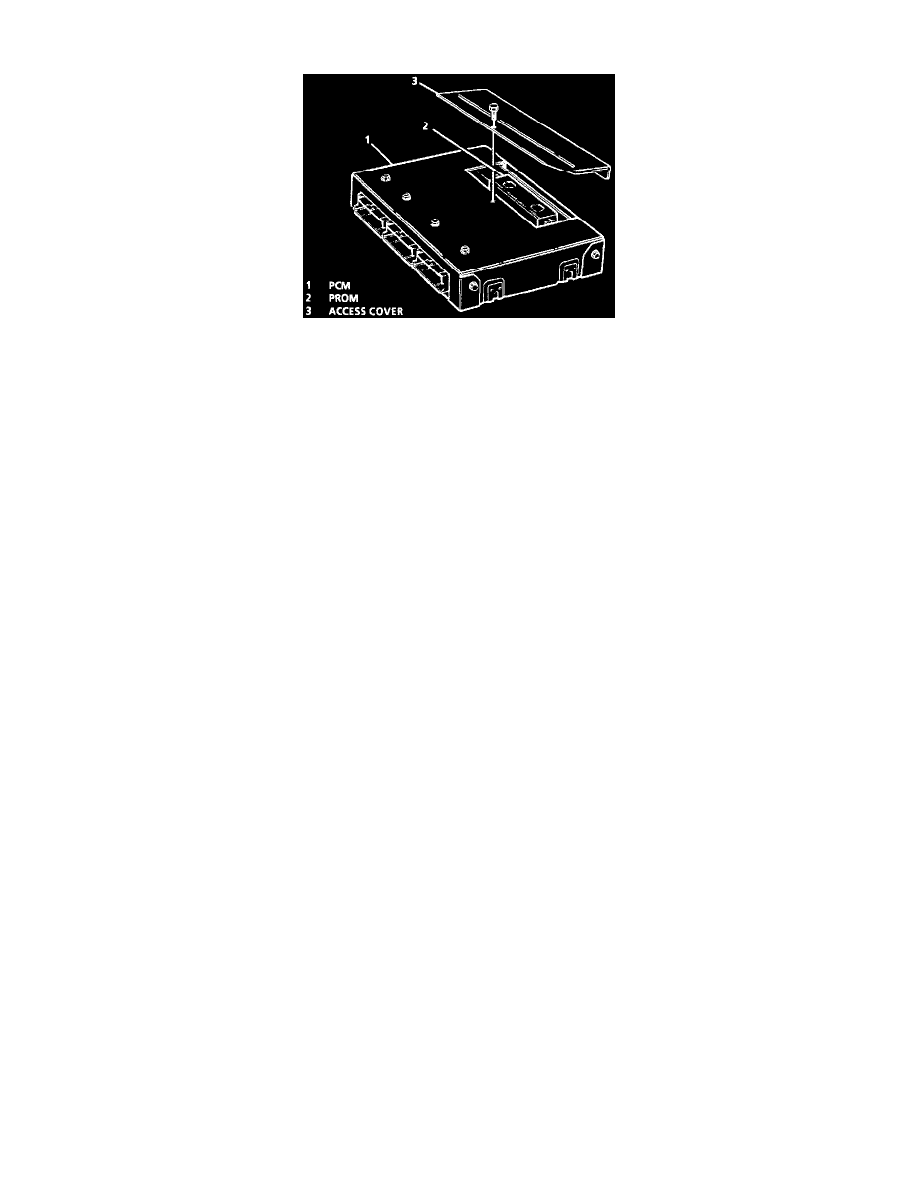Tahoe 4WD V8-393 6.5L DSL Turbo VIN S (1995)

Engine Control Module: Description and Operation
PCM And Prom
DESCRIPTION
The diesel Powertrain Control Module (PCM) is located in the passenger compartment and is the control center of the control module system. The
PCM used on the electronic fuel injected diesel engine is referred to as PCME.
OPERATION
The PCM constantly looks at the information from various sensors, and controls the systems that affect vehicle performance. The PCM performs
the diagnostic function of the system. It can recognize operational problems, alert the driver through the Malfunction Indicator Lamp (MIL)
(Service Engine Soon), and store one or more Diagnostic Trouble Code (DTC)s which identify the problem areas to aid the technician in making
repairs. See diagnosis for more information.
PCM LEARNING ABILITY
The PCM has a "learning" ability which allows it to make corrections for minor variations in the fuel system to improve driveablity If the battery is
disconnected to clear DTCs, or for repair, the "learning" process has to begin all over again.
A change may be noted in the vehicle's performance. To "teach" the vehicle, make sure the engine is at operating temperature, and drive at pan
throttle, with moderate acceleration and idle conditions, until normal performance returns.
CAUTION: The PCM must be maintained at a temperature below 85°C (185°F) at all times. This is most essential if the vehicle is put through a
paint baking process. The PCM will become inoperative if its temperature exceeds 85°C (185°F). Therefore, it is recommended that temporary
insulation be placed around the PCM during the time the vehicle is in a paint oven or other high temperature processes.
MEMORY
There are three types of memory storage within the PCM: ROM, RAM and PROM.
Read Only Memory (ROM)
ROM is a permanent memory that is physically soldered to the circuit hoards within the PCM. The ROM contains the overall control algorithms.
Once the ROM is programmed, it cannot be changed. The ROM memory is non-volatile, and does not need power to be retained.
Random Access Memory (RAM)
RAM is the microprocessor "scratch pad." The processor can write into, or read from this memory as needed. This memory is volatile and needs a
constant supply of voltage to be retained. If the voltage is lost, the memory is lost.
Programmable Read Only Memory (PROM)
PROM is the portion of the PCM that contains the different engine calibration information that is specific to year, model and emissions.
The PROM also contains specific calibration information used to allow fuel delivery if other parts of the PCM are damaged. The PROM is a
non-volatile memory that is read only by the PCM.
While one PCM part number can be used by many vehicle lines, a PROM is very specific and must be used for the right vehicle. For this reason, it
is very important to check the latest parts book and service bulletin information for the correct part number when replacing a PROM.
A PCM used for service comes without a PROM. The PROM should be retained with the vehicle following PCM replacement. The PROM from
an old PCM must be carefully removed and installed in the new PCM refer to Prom or Mem-Cal Replacement.
